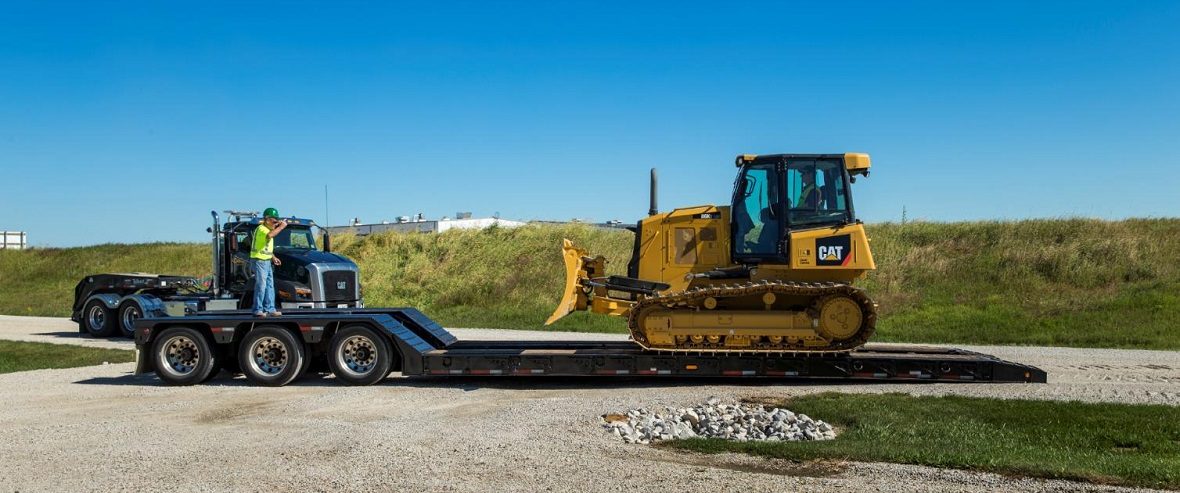
Construction Materials Transportation Guide
The construction economy depends on safe, on-time deliveries. The industry helps generate over $1.23 billion for the American economy, and most freight moves by truck. In fact, truckers handle 72.7% of all freight in the United States. When you plan logistics well, you protect schedules, reduce costs, and keep crews productive.
This guide walks through planning, compliance, and safe handling for common construction materials transportation. It also shows the equipment categories you can rent to move, lift, and stage products at the right time.
Have A Logistics Plan
A complete plan covers inbound and outbound moves, materials and packaging, equipment, site setup, communication, and regulatory needs. Build it before mobilization.
- Inbound transportation: Balance the reciprocal relationship between cost and time so products arrive when needed. Early arrivals strain storage and cash. Late arrivals risk stoppages and rework.
- Outbound transportation: Return excess materials and rented equipment promptly. Include steps for waste and recycling that follow local rules.
- Material logistics: Stage deliveries to match milestones. Account for true costs such as rental, fuel, loading, and offloading time.
- Equipment logistics: List machines and attachments by task, when and where each is needed, and how you will source, transport, and return them.
- Site management: Prepare access, storage, and lifting areas for each delivery. Confirm ground bearing, turning space, and overhead clearance.
- Communication: Publish a simple schedule so everyone knows what is arriving, when, and who handles it. Share changes quickly.
- Weather and season: Plan for rain, wind, heat, and freezing conditions. Keep coverings on hand and hold backup dates for sensitive materials.
Comply With Regulations
Truck transport has rules that keep roads safe and operations predictable. Knowing the basics helps you avoid fines and delays.
Industry organizations track the critical issues in the trucking industry. The Federal Motor Carrier Safety Administration requires electronic logging device (ELD) use to record hours of service for many drivers. Follow limits on weight, capacities, and dimensions and verify licensing where required.
Coordinate timing with drivers so loads can clear weigh stations and reach the site during open receiving windows. Confirm site access routes before the first delivery.
Roofing Materials
Roofing is heavy and often arrives in mixed forms such as rolled goods, shingles, and pallets. Use the right vehicle and secure tie downs for the load type. Flat deck trucks or tractor-trailers work well depending on size.
At delivery, on site cranes and telehandlers place pallets on roofs. For lighter bundles, forklifts or skid steers with pallet forks manage unloading. Use fabric straps and ratchets to secure open deck loads and edge protection where needed.
Keep a spotter in place, barricade lift areas, and store materials on level, protected surfaces to prevent sliding or water damage.
Bulk Construction Materials
Bulk goods include aggregates, framing lumber, and insulation. Contain and protect loads so they arrive intact. Use bins, crates, tarped trailers, roll off containers, or flat decks with hoists.
Make sure loading and offloading areas have the right lifting gear at both ends. Packaging can be challenging due to inconsistent sizes so plan containment, labeling, and handling up front.
When weather threatens, use covers and keep drainage paths clear so materials do not absorb water or blow away.
Furniture And Household Goods
As projects finish, delicate items such as appliances and artwork need weather protection and careful handling. Enclosed vans and trailers keep goods safe from sun and rain.
Use dollies and skids to limit heavy manual lifts, padding and tarps to prevent scuffs, and tie down straps to secure loads. Ramps and lifts reduce strain on crews and lower the risk of dropped items.
Create a simple receiving checklist so teams verify counts, inspect for damage, and record locations for installation.
Concrete Mixtures
Ready-mix concrete is time sensitive. Once water meets cement and aggregates, placement windows start. Coordinate plants, drivers, and site crews so mixes arrive and pour on schedule.
Typical tools include concrete mixing, placing, and handling equipment: mixer trucks, pumper trucks, vibrators, power trowels, and core drills.
Skilled drivers and clear communication help you maintain quality and timelines. Prepare access routes, washout areas, and backup placement paths. Keep finishing tools ready before the first truck arrives.
Match your job to the right construction-related machines and tools at The Cat® Rental Store. Categories include:
Tips for Planning and Receiving
- Stage materials near the point of use to cut rehandling.
- Separate fragile or high value goods and mark them for enclosed storage.
- Confirm lifting points and load ratings before rigging.
- Keep aisles clear, post traffic patterns, and use spotters for tight turns.
- Close the loop with suppliers by sharing feedback on packaging and delivery timing.
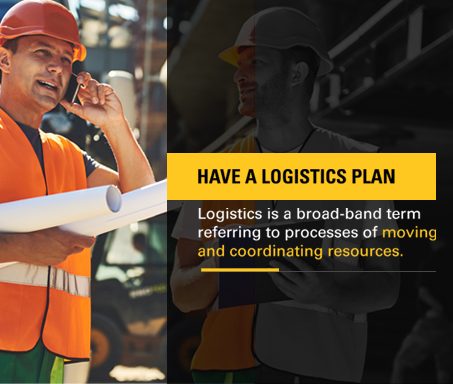

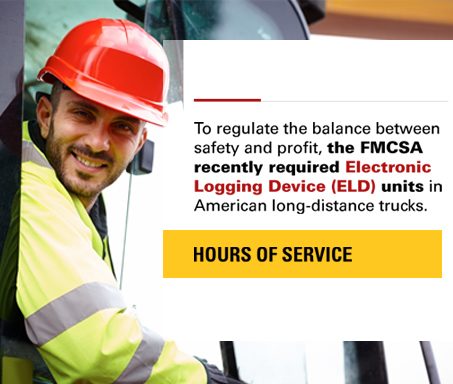
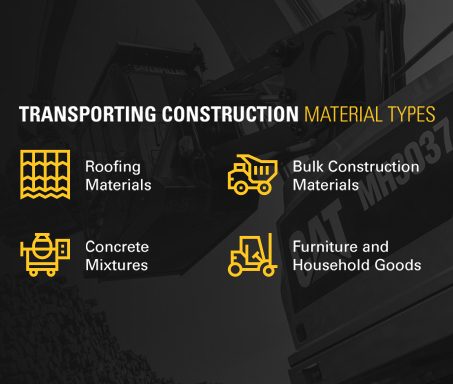
Rent Equipment from The Cat® Rental Store
Renting keeps overhead low and ensures the right machine is available at the right time. You can align delivery with mobilization and schedule pickup at closeout.
To check rates and availability, browse our equipment online, then contact your local Cat Rental Store for sizing, delivery, and support.
Find The Cat Rental Store Near You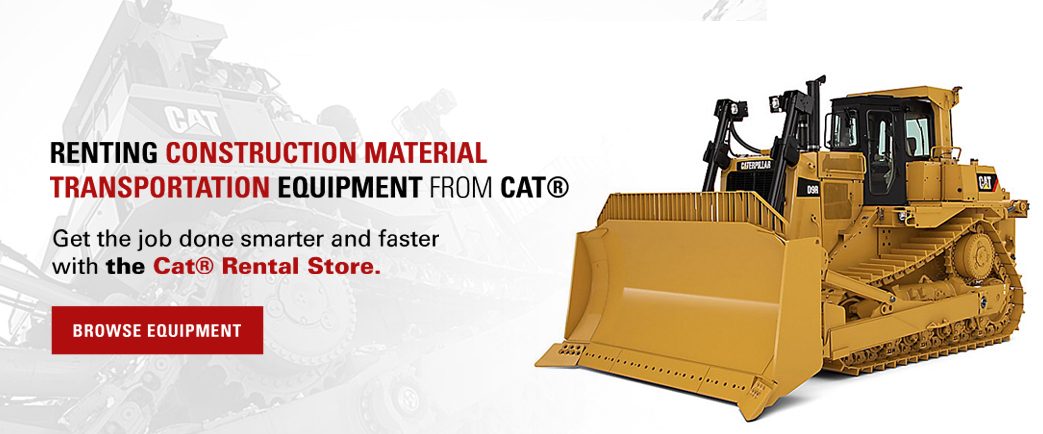
Related Posts

Construction Project Management: The Ultimate Guide
There are a lot of moving parts within a construction project, and construction project management helps pull everything together. Learn more today.
Read More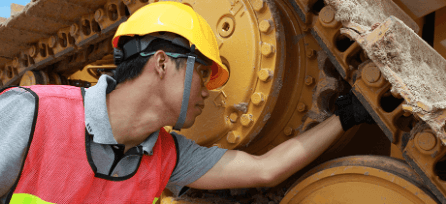
What Causes Construction Project Delays?
Construction project delays impact productivity and reduce profit margins. Discover the top reasons for construction project delays and learn how to avoid them.
Read More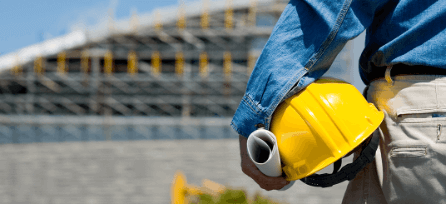
Construction Risk Management
Risks are an inevitable part of life, but you can take an active role in responding to risks through risk management. Learn more with The Cat Rental Store.
Read More
The Construction Software Guide
If you're looking to optimize your construction company's operations, construction software can be a great tool to utilize. Learn more with our guide.
Read More